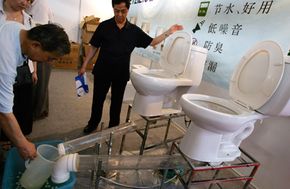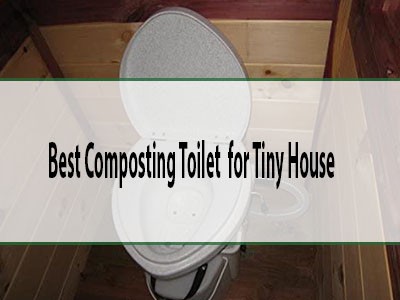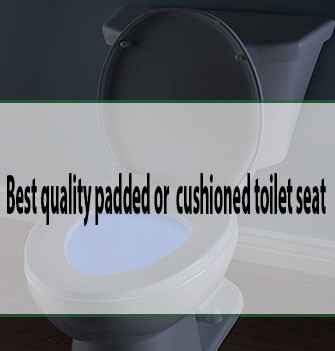Imagine a scenario where every single person in the world decided to flush their toilets simultaneously. It sounds like the plot of a science fiction movie, doesn’t it?
But what would actually happen if such a synchronized flush took place? Would it cause global chaos or simply be a ripple in the massive infrastructure that supports our daily lives? You’re about to uncover the surprising truth behind this hypothetical situation.
Prepare to have your curiosity piqued and your assumptions challenged as we delve into the intricate world of plumbing, water management, and the potential consequences of a worldwide flush. Stay with us as we unravel the mysteries of what could transpire, and you might just find yourself looking at your bathroom in a whole new light.

Credit: home.howstuffworks.com
Table of Contents
Global Toilet Flush Phenomenon
Imagine everyone flushing toilets at the same time. That’s a lot of water! The pipes might get very full. Some toilets might not work. Water pressure could drop. People might see toilets take longer to fill. This could cause a big problem.
The city’s water system might struggle. It might lead to pipes breaking. This can cause water to spill. If this happens, streets could flood. It’s important to use water wisely.
Toilets are designed for normal use. Mass flushing isn’t normal. It could create issues. Understanding water limits helps cities. It keeps everyone safe.
Sewer System Capacity
Sewer systems are built to handle many flushes. But not all at once. They have a maximum capacity. If everyone flushes at the same time, the system may overflow. This could cause flooding in streets. It’s like too many cars on a small road. Traffic jams happen. The sewer pipes are not big enough for all the water. They have limitations. It is important to not overuse them at once.
Water moves through pipes by pressure. Too much water means higher pressure. This can cause pipes to burst. Flow dynamics help water move smoothly. But with everyone flushing, the flow becomes chaotic. This can lead to blockages. Think of a crowded hallway. People can’t move fast. Similarly, water can’t flow quickly. This is why it’s important to manage flow and pressure.
Impact On Water Supply
Everyone flushing at once means huge water demand. Pipes might not handle it. Water supply systems could get strained. People might face low water pressure. Some places might even run out of water. It’s like trying to fit too much in a small bag. Water reserves might drop quickly. This can cause problems for homes and buildings. Imagine a busy road with too many cars. The same happens with water pipes.
Treating so much water at once is hard. Treatment plants might not cope. They clean water before we use it. Too much water can slow the process. Sometimes, not all the water gets cleaned. This can lead to dirty water reaching homes. Imagine filling a glass too fast. It spills. Plants might face similar issues. They need time to treat water properly. Overloading them can cause big problems.

Credit: www.youtube.com
Potential Infrastructure Failures
The pipes might break. Too much water can cause this. Pressure builds up quickly. Small pipes cannot handle the rush. Blockages occur. Debris gets stuck. Toilets overflow. Sewage backs up into homes. It’s messy. It’s unhealthy. Repair costs can be high. Plumbers work hard.
Pump stations could fail. They move water away. Too much water can stop them. Pumps work overtime. They get overheated. Motors burn out. Backup systems might not help. Floods happen in streets. People get stranded. Traffic jams occur. It’s chaotic. Power outages might follow. Fixing pumps takes time.
Environmental Consequences
Imagine everyone flushing their toilets at once. Sewer systems would face massive pressure, risking blockages and overflows. Water treatment plants might struggle to process the sudden surge, potentially leading to untreated waste entering natural waterways. This scenario could harm aquatic life and disrupt ecosystems.
Water Pollution
If everyone flushed at the same time, water pollution could increase. The sewage systems would become overwhelmed. Untreated waste might flow into rivers and lakes. This would harm fish and plants. Drinking water could become unsafe. People could get sick. Clean water is vital for life.
Ecosystem Disruptions
Such an event could disrupt ecosystems. Animals and plants rely on clean water. Dirty water can kill fish and plants. This affects the entire food chain. Birds and other animals might lose food. Polluted water can spread diseases. Nature struggles to recover from such damage.

Credit: www.tiktok.com
Social And Economic Effects
Water systems could get overloaded. This may cause sewage to spill. Dirty water on streets can make people sick. Germs would spread fast. Hospitals might fill with sick people. Doctors would be very busy. Many would worry about their health. This can cause panic.
Fixing broken pipes costs a lot of money. Cities would need to repair quickly. This means spending more than planned. Businesses may close. Workers could lose jobs. Shops might run out of clean water. This affects everyone’s daily life. The economy could slow down. People would need to save more money.
Preventive Measures
Cities need strong pipes and pumps. Old pipes can break easily. Strong pipes help water flow smoothly. Big tanks can hold more water. This stops spills. Sensors can check water levels. They send alerts if there’s a problem. Upgraded systems save money in the long run.
People must learn about water use. Campaigns teach how to save water. Posters and ads show easy tips. Schools can teach kids about it. Families can join events to learn more. Knowing how to save water is important. It helps everyone stay safe.
Frequently Asked Questions
Can Flushing All Toilets At Once Cause Damage?
Yes, simultaneous flushing could stress plumbing systems. It may lead to clogged pipes, overflowing toilets, or sewage backups. Residential and municipal systems aren’t designed for such scenarios. However, water pressure variations are unlikely to cause widespread infrastructure damage. Properly maintained systems can handle increased flow temporarily, but not continuously.
How Does Simultaneous Flushing Affect Water Pressure?
Simultaneous flushing can temporarily lower water pressure. Pipes handle limited flow, and multiple flushes increase demand. This can lead to reduced pressure in homes. Municipal systems might experience minor fluctuations. Pressure stabilizes once the demand decreases. It’s unlikely to cause permanent issues in well-maintained systems.
Can Sewer Systems Handle Mass Toilet Flushing?
Sewer systems are designed for peak usage but not simultaneous flushing. Mass flushing can overload pipes, leading to backups or spills. Wastewater treatment plants might struggle with sudden influxes. Proper maintenance helps systems manage increased flow better. Avoiding mass flushing events prevents potential disruptions and damage.
What Impact Does Mass Flushing Have On The Environment?
Mass flushing strains sewage systems, potentially causing overflows. Untreated sewage can harm local water bodies. Treatment plants face challenges with sudden influxes. Overflow prevention measures help mitigate risks. Responsible water usage and system maintenance are key to minimizing environmental impacts from mass flushing events.
Conclusion
The thought of everyone flushing simultaneously is fascinating. But it’s unlikely to happen. The plumbing system is designed to handle high demand. Yet, it could face temporary stress. Water pressure might drop. Sewage systems could overflow in some areas. Fortunately, such an event is improbable.
People flush toilets at different times. This staggered usage prevents massive strain. Understanding the capacity of our systems is important. It highlights the need for efficient water management. Always remember to conserve water. Every flush counts in preserving our resources.






